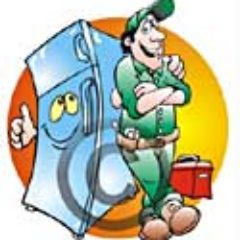Seattle Appliance Repair works on all brands and models of furnaces and heating systems such as Bryant, Lennox, Puron , Caloric, Trane, Ruud, Carrier and many more. View the full list:
If your furnace doesn’t come on, you don’t have hot water or you have any other issues with it, simply call our toll free number and we will take care of your problem. We are available 24/7 for your Seattle heating repair at:8
Please note that all purchased heating and furnace parts are shipped directly to you.
Our heating systems repair area includes all of Seattle and the surrounding cities that are listed below:
| Earlmount East Union Eastgate Eastmont Edmonds |
Newcastle Newport Hills Normandy Park North City Northgate |
Shorewood Silver Lake Skyway Snohomish view the rest service areas |
The information below is designed to provide how to increase the life of your heating system and use it in the most efficient way, so that will save you money form future utility bills and heating repairs in Seattle. It is posted with the understanding that we are not offering advice that you do heating repairs on your own. If Seattle heating repair expert assistance is required, the services of competent heating repair professionals are available 24/7 at our toll free phone number.
800 465 0697
Hot-water heating systems
In a hot-water, or hydronic, heating system, water is heated in a gas, oil, or electric boiler and circulated through pipes to convectors in the rooms. In some older heating systems, instead of convectors there are heating radiators that look like steam radiators. As the water passes through the metal convectors, it heats them; they, in turn, give off their heat to the room. A number of different piping arrangements are used in hot-water heating systems, as illustrated below.
A heating pump called a circulator drives the water through the pipes and convectors whenever the heating room thermostat calls for heat. It’s usually positioned near the boiler in the return line, where the water is coolest. A flow-control valve keeps the water from flowing when the heating water pump is not operating, and so keeps the heating system from overheating the convectors. Because water expands when it is heated, an airtight expansion tank is installed near the boiler to take in the excess. As water enters the tank, the air inside is compressed, making it possible for the volume of the water to increase without building up much pressure in the heating system. Without room for expansion, pressure could build up rapidly, breaking a pipe or a boiler casting, If the expansion tank fills up, the excess water escapes through the safety relief valve on top of the boiler. Older heating types of tanks (facing page) must be drained when they get too full of water; newer diaphragm tanks have an elastic divider separating the air from the water, and should be drained only by a boiler serviceperson or plumber.
Improving heating efficiency. To reduce heat loss, insulate any pipes that run through crawl spaces or other unheated areas. To help balance the heat delivered to various rooms, you can partly close the shutoff valve on individual convectors or i,idiators, allowing less hot water to enter. Or you (,;In install separate theimostatic valves on the convictors, but these can be expensive.
Heating system maintenance. Twice a year, oil the circulator I)turn and motor if they are not permanently lubricated. Before doing any heating repair work on a boiler, turn off the power to it; wait until the system cools then, if required for the repair, drain the boiler as you would when replacing a radiator. When water is heated for the first time in a long while or just after the boiler has been refilled, it releases air, which gets trapped in the convectors and keeps the hot water out. To get rid of the trapped air, vent the convectors.
If expert assistance is required, the services of competent professionals are available 24/7
